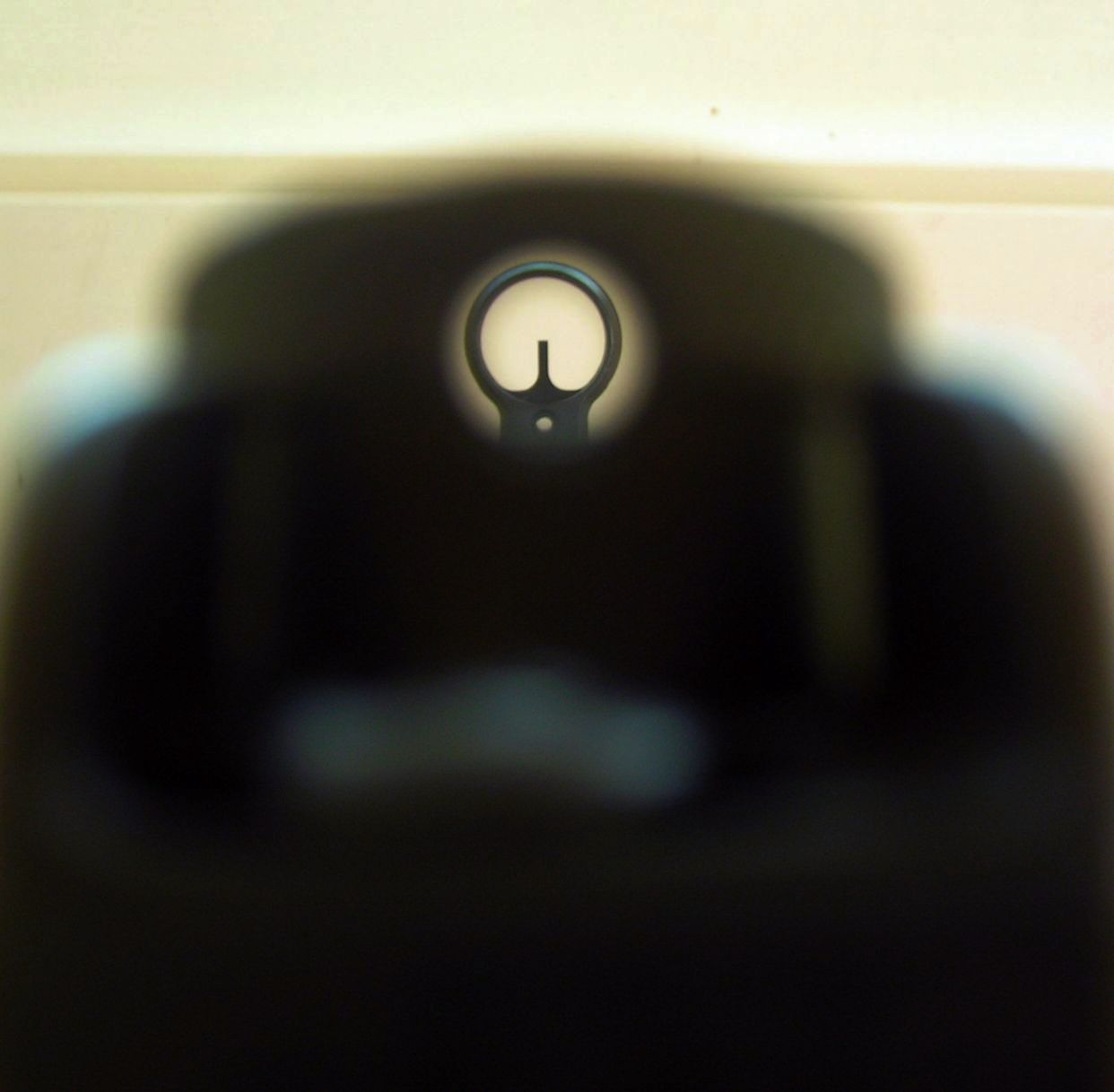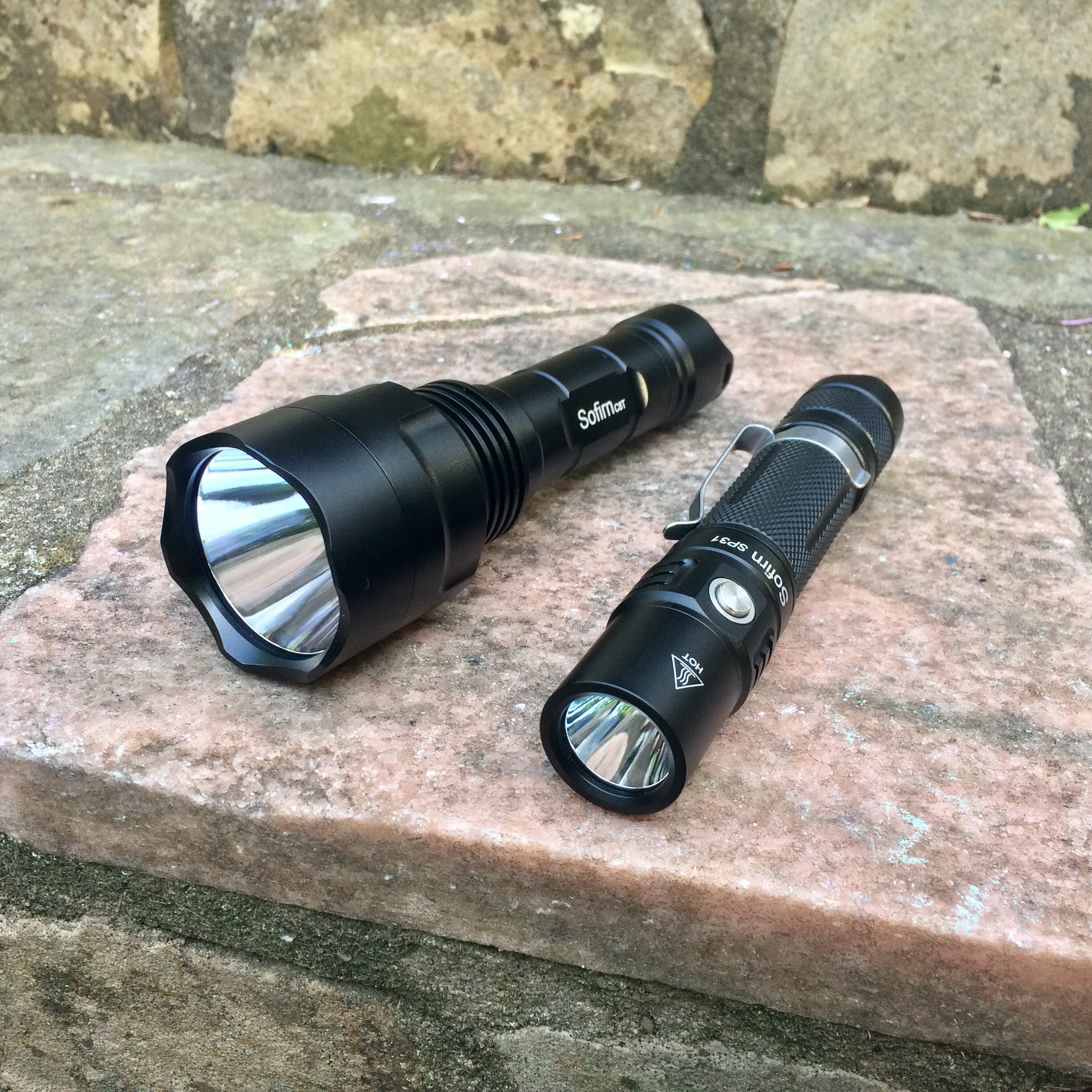|
Tritium Illumination
Tritium radioluminescence is the use of gaseous tritium, a radioactive isotope of hydrogen, to create visible light. Tritium emits electrons through beta decay and, when they interact with a phosphor material, light is emitted through the process of phosphorescence. The overall process of using a radioactive material to excite a phosphor and ultimately generate light is called radioluminescence. As tritium illumination requires no electrical energy, it has found wide use in applications such as emergency exit signs, illumination of wristwatches, and portable yet very reliable sources of low intensity light which won't degrade human night vision. Gun sights for night use and small lights (which need to be more reliable than battery powered lights, yet not interfere with night vision or be bright enough to easily give away one's location) used mostly by military personnel fall under the latter application. History Tritium was found to be an ideal energy source for self-luminous c ... [...More Info...] [...Related Items...] OR: [Wikipedia] [Google] [Baidu] |
Phosphor
A phosphor is a substance that exhibits the phenomenon of luminescence; it emits light when exposed to some type of radiant energy. The term is used both for fluorescent or phosphorescent substances which glow on exposure to ultraviolet or visible light, and cathodoluminescent substances which glow when struck by an electron beam ( cathode rays) in a cathode-ray tube. When a phosphor is exposed to radiation, the orbital electrons in its molecules are excited to a higher energy level; when they return to their former level they emit the energy as light of a certain color. Phosphors can be classified into two categories: fluorescent substances which emit the energy immediately and stop glowing when the exciting radiation is turned off, and phosphorescent substances which emit the energy after a delay, so they keep glowing after the radiation is turned off, decaying in brightness over a period of milliseconds to days. Fluorescent materials are used in applications in wh ... [...More Info...] [...Related Items...] OR: [Wikipedia] [Google] [Baidu] |
SUSAT
The Sight Unit Small Arms, Trilux, or SUSAT, is a 4× telescopic sight, with Tritium illumination , tritium-powered illumination utilised at dusk or dawn. The full name of the current model is the SUSAT L9A1. The sight is not designed as a sniper sight, but is rather intended to be mounted on a variety of rifles and to be used by all infantrymen. Similar devices include the Advanced Combat Optical Gunsight (ACOG), manufactured by Trijicon, and the Specter (sight), Elcan Specter. Use SUSAT was the primary sighting system for the British Army's SA80, SA80 series weapons. It was also used with FN Minimi, L108 and L110 light machine guns, and mounted to FN MAG, L7 and M2 Browning, L111 machine guns. It was phased out and replaced by Advanced Combat Optical Gunsight, ACOG and ELCAN Optical Technologies, ELCAN sight units during mid-life upgrade programmes. As of March 2025 it is still in use with much of the UK armed forces – primarily reserve, rear-echelon and for training use d ... [...More Info...] [...Related Items...] OR: [Wikipedia] [Google] [Baidu] |
SA80
The SA80 (Small Arms for the 1980s) is a British family of 5.56×45mm NATO service weapons used by the British Army. The L85 Rifle variant has been the standard issue service rifle of the British Armed Forces since 1987, replacing the L1A1 Self-Loading Rifle. The prototypes were created in 1976, with production of the A1 variant starting in 1985 and ending in 1994. The A2 variant came to be as the result of a significant upgrade in the early 2000s by Heckler & Koch and remains in service as of 2025. The A3 variant was first issued in 2018 with several new improvements. The remainder of the SA80 family consists of the L86 Light Support Weapon, the short-barrelled L22 Carbine and the L98 Cadet rifle. The SA80 was the last in a long line of British weapons (including the Lee–Enfield family) to come from the Royal Small Arms Factory, the national arms development and production facility at Enfield Lock, before its weapons factory was closed down in 1988. Development Post-war i ... [...More Info...] [...Related Items...] OR: [Wikipedia] [Google] [Baidu] |
Reticle
A reticle or reticule, also known as a graticule or crosshair, is a pattern of fine lines or markings built into the eyepiece of an optical device such as a telescopic sight, spotting scope, theodolite, optical microscope or the electronic visual display, screen of an oscilloscope, to provide frame of reference, measurement references during visual inspections. Today, engraved lines or embedded fibers may be replaced by a digital image superimposed on a screen or eyepiece. Both terms may be used to describe any set of patterns used for aiding visual measurements and calibrations, but in modern use ''reticle'' is most commonly used for weapon sight (device), sights, while ''graticule'' is more widely used for non-weapon measuring instruments such as oscilloscope#Graticule, oscilloscope display, astronomic telescopes, microscopes and microscope slide, slides, surveying instruments and other similar devices. There are many variations of reticle pattern; this article concerns its ... [...More Info...] [...Related Items...] OR: [Wikipedia] [Google] [Baidu] |
Iron Sights
Iron sights are a system of physical alignment markers used as a sighting device to assist the accurate aiming of ranged weapons such as firearms, airguns, crossbows, and bows, or less commonly as a primitive finder sight for optical telescopes. Iron sights, which are typically made of metal, are the earliest and simplest type of sighting device. Since iron sights neither magnify nor illuminate the target, they rely completely on the viewer's naked eye and the available light by which the target is visible. In this respect, iron sights are distinctly different from optical sight designs that employ optical manipulation or active illumination, such as telescopic sights, reflector (reflex) sights, holographic sights, and laser sights. Iron sights are typically composed of two components mounted perpendicularly above the weapon's bore axis: a 'rear sight' nearer (or 'proximal') to the shooter's eye, and a 'front sight' farther forward (or 'distal') near the muzzle. During ... [...More Info...] [...Related Items...] OR: [Wikipedia] [Google] [Baidu] |
Flashlight
A flashlight (US English) or electric torch (Commonwealth English), usually shortened to torch, is a portable hand-held electric lamp. Formerly, the light source typically was a miniature incandescent light bulb, but these have been displaced by light-emitting diodes (LEDs) since the early 2000s. A typical flashlight consists of the light source mounted in a reflector, a transparent cover (sometimes combined with a lens) to protect the light source and reflector, a battery, and a switch, all enclosed in a case. The invention of the dry cell and miniature incandescent electric lamps made the first battery-powered flashlights possible around 1899. Today, flashlights use mostly light-emitting diodes and run on disposable or rechargeable batteries. Some are powered by the user turning a crank, shaking the lamp, or squeezing it. Some have solar panels to recharge the battery. Flashlights are used as a light source outdoors, in places without permanently installed lighting, during ... [...More Info...] [...Related Items...] OR: [Wikipedia] [Google] [Baidu] |
Compass
A compass is a device that shows the cardinal directions used for navigation and geographic orientation. It commonly consists of a magnetized needle or other element, such as a compass card or compass rose, which can pivot to align itself with North magnetic pole, magnetic north. Other methods may be used, including gyroscopes, magnetometers, and GPS receivers. Compasses often show angles in degrees: north corresponds to 0°, and the angles increase clockwise, so east is 90°, south is 180°, and west is 270°. These numbers allow the compass to show azimuths or bearing (angle), bearings which are commonly stated in degrees. If local magnetic declination, variation between magnetic north and true north is known, then direction of magnetic north also gives direction of true north. Among the Four Great Inventions, the magnetic compass was first invented as a device for divination as early as the history of science and technology in China, Chinese Han dynasty (since c. 206 BC),#Li, ... [...More Info...] [...Related Items...] OR: [Wikipedia] [Google] [Baidu] |
Dial (measurement)
A dial is generally a flat surface, circular or rectangular, with numbers or similar markings on it, used for displaying the setting or output of a timepiece, radio, clock, watch, or measuring instrument. Many scientific and industrial instruments use dials with pointers to indicate physical properties. Examples include pressure and vacuum gauges, fluid-level gauges (for fuel, engine oil, and so on), voltmeters and ammeters, thermometers and hygrometers, speedometers and tachometers, and indicators (distance amplifying instruments). Traditionally these have been mechanical devices, but with the advent of electronic displays, analog dials are often simulated from digital measurements. The term may also refer to a movable control knob used to change the settings of the controlled instrument, for example, to change the frequency of the radio, or the desired temperature on a thermostat. Styles of dials: * Circular, * Fixed pointer with moving scale, * Fixed scale with moving di ... [...More Info...] [...Related Items...] OR: [Wikipedia] [Google] [Baidu] |
Keychain
A keychain () (also keyring) is a small ring or chain of metal to which several keys, or fobs can be attached. The terms keyring and keychain are often used interchangeably to mean both the individual ring, or a combined unit of a ring and fob. The length of a keychain or fob may also allow an item to be used more easily than if connected directly to a keyring. Some keychains allow one or both ends to rotate, keeping the keychain from becoming twisted, while the item is being used. Use of keychains Advertising & Souvenirs Keychains are one of the most common souvenir and advertising items. In the 1950s and 1960s, with the improvement of plastic manufacturing techniques, promotional items including keychains became unique. Businesses could place their names and logos on promotional keychains that were three-dimensional for less cost than the standard metal keychains. Keychains are small and inexpensive enough to become promotional items for larger national companies t ... [...More Info...] [...Related Items...] OR: [Wikipedia] [Google] [Baidu] |
Wristwatch
A watch is a timepiece carried or worn by a person. It is designed to maintain a consistent movement despite the motions caused by the person's activities. A wristwatch is worn around the wrist, attached by a watch strap or another type of bracelet, including metal bands or leather straps. A pocket watch is carried in a pocket, often attached to a chain. A stopwatch is a type of watch that measures intervals of time. During most of their history, beginning in the 16th century, watches were mechanical devices, driven by clockwork, powered by winding a mainspring, and keeping time with an oscillating balance wheel. These are known as '' mechanical watches''. In the 1960s the electronic ''quartz watch'' was invented, powered by a battery and keeping time with a vibrating quartz crystal. By the 1980s it had taken over most of the watch market, in what became known as the quartz revolution (or the quartz crisis in Switzerland, whose renowned watch industry it decimate ... [...More Info...] [...Related Items...] OR: [Wikipedia] [Google] [Baidu] |





